David Stone (sitting as an
Enterprise Judge):
1.
Mei Fields
designs greeting cards. She has designed over 2300 such cards, many of them
involving swatches of fabric decorated with beads, sequins and/or stitching.
Images of some of her cards appear later in this judgment. It is alleged that copyright
in Mrs Fields’ card designs (the “Works”) has been infringed by Saffron Cards
and Gifts Limited (“Saffron”). It is also alleged that the sole director and
shareholder of Saffron, the Second Defendant Mr Paul Steele, is jointly and
severally liable for the infringing acts of Saffron.
2.
For present
purposes, the allegedly infringing greeting cards fall into two groups: the first,
which I will call Group A, are cards designed by Mrs Fields and produced and
sold by Saffron after 21 March 2016, the date on which the Claimant, Mei Fields
Designs Limited (“MFD”) terminated the licence it had with Saffron for Saffron
to produce cards designed by Mrs Fields. The second, Group B, are cards designed
by Saffron’s designers which are alleged to be infringing copies of cards
designed by Mrs Fields.
3.
Saffron and Mr
Steele both deny copyright infringement. In relation to the Group A cards, Saffron’s
main argument is that ownership of copyright in Mrs Fields’ cards never sat
with her, and so MFD does not own the relevant copyright, and cannot bring
these proceedings. The bulk of the two day trial was taken up with the
ownership issue. In short, MFD says that Mrs Fields designed the cards and
assigned the copyright to it. The Defendants say that when Mrs Fields designed
the cards, she was employed by Metropolis Worldwide Limited (“Metropolis”) and
that Metropolis therefore solely owned the copyright in the cards.
Alternatively the Defendants say that, as a director of Metropolis, Mrs Fields
only holds any copyright on trust for Metropolis. In the further alternative,
the Defendants say that Mrs Fields created the cards together with various
employees of Metropolis, and so any copyright is jointly owned with Metropolis.
In any event, the Defendants say that Metropolis sold its intellectual property
to Saffron in 2014 and that therefore MFD no longer holds any enforceable
rights in such property. The ownership issue arises only in relation to cards
produced by Mrs Fields prior to 23 December 2013.
4.
MFD also
alleges that 12 Group B cards created by Saffron in 2014 are unlawful copies of
Mrs Fields’ designs. Saffron admits that it had access to Mrs Fields’ designs,
and took the idea of a swatch of fabric attached to a card, but Saffron says
that the cards simply are not close enough to infringe any copyright.
5.
The Defendants
counterclaim for a declaration that they have not infringed any copyright in
the cards together with orders for publication and dissemination.
6.
Further, Mr
Steele says that whilst he was the sole director and sole shareholder of Saffron,
he was not sufficiently responsible to be jointly liable for copyright
infringement. This is important for MFD because earlier this year Saffron
divested itself of most of its assets, so no longer has sufficient assets to
meet any judgment against it for copyright infringement.
7.
MFD’s claim for
unpaid royalties was settled prior to the hearing, and I need say no more about
it.
8.
Ms Ashton
Chantrielle of counsel appeared for MFD. Mr Jonathan Moss of counsel appeared
for Saffron and Mr Steele.
Background facts
9.
Many of the
background facts are uncontested, although the legal consequences of those
facts are hotly disputed.
(a)
Metropolis was
incorporated on 13 January 2000. From then until December 2013, Mrs Fields and
her husband Mr Paul Fields ran Metropolis. They were its only directors and
shareholders. Both were also employed within the business: Mrs Fields as Design
Director and Mr Fields in sales. Both received salaries for their roles.
(b)
Initially,
Metropolis distributed cards produced by third parties. It also published a
bespoke postcard range for a Japanese distributor. In Spring 2000, Metropolis
was granted a licence by the BBC to produce greeting cards, posters and
t-shirts for the “Walking with Dinosaurs” series.
(c)
From September
2000 until December 2013, Mrs Fields designed greeting cards that were then
produced and sold by Metropolis. These cards included on the back “Designed by
Mei Fields” and “Published by Metropolis”. Metropolis had some success – its
ranges of greeting cards were sold in larger retailers including John Lewis,
Paperchase, Selfridges, Liberty, Fortnum & Mason and Waitrose.
(d)
In April 2011, suffering
from cash flow problems and following professional advice, Metropolis entered
into a Company Voluntary Arrangement (“CVA”). Metropolis continued to trade.
(e)
In April 2012,
following an approach from a third party wishing to license Mrs Fields’
designs, Mr and Mrs Fields took advice, and set up the Claimant, MFD, to own
and exploit the copyright in Mrs Fields’ designs for greeting cards. On the
same day that MFD was incorporated (10 April 2012), a document was signed
purporting to be an assignment to MFD of all copyright owned by Mrs Fields in
the cards she had designed and in all future cards (the “10 April 2012 Document”).
The legal effect of that document is in dispute. On 12 April 2012, MFD entered
into two licence agreements as licensor, one with Metropolis and one with Swan
Mill Paper Company Limited. A Metropolis board minute of 17 April 2012 also
mentions the set up.
(f)
Despite the
CVA, Metropolis struggled financially. In December 2013, Metropolis stopped
making payments into the CVA and filed an intention to go into administration.
Mr Philip Armstrong was appointed as one of the joint administrators. The
assets of the business were offered for sale. These expressly excluded the
copyright in the cards designed by Mrs Fields, as noted in:
i.
Mr Steele’s email
to one of his advisors dated 6 December 2013;
ii.
The posting of
the assets at IP-BID.com on 10 December 2013;
iii.
The internal
memo from FRP Advisory dated 17 December 2013; and
iv.
The letter from
FRP Advisory to creditors dated 17 January 2014.
(g)
Mr Steele, who
is not himself particularly creative (his words) but has a long experience in
creative industries, expressed an interest in buying Metropolis’s assets. Mr
Steele incorporated Saffron on 12 December 2013 as a corporate vehicle to own
the assets acquired from Metropolis. Saffron entered into a licence with MFD on
23 December 2013 (the “Licence Agreement”) under which Saffron would produce
cards to designs licenced from MFD. The Licence Agreement is clear on its terms
that MFD owns all copyright in the designs created by Mrs Fields. Mr and Mrs
Fields were paid out on the termination of their employment with Metropolis as
at 31 December 2013. Whilst it was originally intended that Mr Fields be
employed by Saffron as a sales director, that was not in the end pursued by Mr
Steele.
(h)
On 9 January
2014, Saffron purchased “certain of the business and assets” of Metropolis for
£20,000.
(i)
Mr Steele moved
into Metropolis’ premises in January 2014 and Saffron took over the business of
Metropolis, including the employees (other than Mr and Mrs Fields). On the
premises at the time Saffron moved in were a computer in the art department on
which Mrs Fields’ digital artwork was stored; archived samples of all of Mrs
Fields’ designs published by Metropolis; catalogues showing Mrs Fields’
designs; warehouse stock and a permanent display of cards in the show room.
(j)
Whilst Mrs
Fields initially designed cards for Saffron under the terms of Saffron’s
Licence Agreement with MFD, the relationship soon soured. There is evidence of
disputes between Mr and Mrs Fields on the one hand, and Mr Steele on the other
hand, as early as April and May 2014.
(k)
On 20 October
2014, Mrs Fields discovered that Saffron had launched two ranges of cards
called Adorn and Couture. The Adorn and Couture ranges (which included the
Group B cards referred to above) were launched in October 2014. MFD alleges
that cards in both ranges are copies of cards designed by Mrs Fields.
(l)
Saffron withheld
royalty payments to MFD as early as July 2014, and then stopped paying royalties
altogether in February 2016. On 21 March 2016, MFD terminated the Licence Agreement.
Saffron continued to sell cards designed by Mrs Fields, including to John
Lewis, Waitrose, Waterstones, Tesco and online via Amazon (ie the Group A
cards).
(m)
A letter before
action was sent on behalf of MFD on 30 June 2016, although the parties had been
in correspondence prior to that date. These proceedings were commenced on 5
July 2017.
(n)
It was
announced in the industry press on 6 March 2018 that Mr Steele had retired after
40 years in the card and gift trade. The same article announces the transfer of
Saffron’s assets to a third party card and gift company.
10.
I note for
completeness that the uncontested evidence before me was that it takes at least
six months to prepare a new handmade range of greeting cards from initial
design concept to launching the product on the market.
11.
The written
evidence included reference to a number of other incidents where the parties’
accounts of events differed. It was submitted by both parties that these were
irrelevant to the issues before me. It is important in legal proceedings, and
particularly proceedings in the IPEC, to confine the evidence to the issues
between the parties. I was asked not to determine these additional irrelevant
issues, and I have not done so. For the avoidance of doubt, I include in those
issues the views of the various buyers at Waitrose. Although counsel for MFD
urged me to take these into account, as counsel for Saffron rightly pointed
out, this is not a passing off or trade mark case, so evidence of
misrepresentation or confusion is irrelevant.
Witnesses
12.
MFD relied on
the following witnesses:
(a)
Mrs Fields
provided two witness statements, and was cross-examined. The Defendants
conceded that Mrs Fields was “a fair witness in parts”. Three criticisms were
made of her evidence. First, it was said that when pushed on some of the key
details of her evidence, she was evasive and not willing to accept obvious
points. Second, it was said that her evidence on her “understanding” of
copyright ownership was “wholly unreliable” and “untrue”. Third, she was
criticized for not having produced any design documents for the designs in
issue. I return to the first two of these matters below, but in my judgment,
Mrs Fields was a reliable witness. She gave her evidence frankly and carefully.
Her oral evidence was consistent with her written testimony, and with that of
other witnesses. She maintained her position in the face of a skilful and sustained
attack on her credibility in cross-examination. She did not always recall
events of some years ago, but she accepted this. I do not accept the criticisms
of her evidence. In relation to the third criticism, I do not accept that Mrs
Fields was required to adduce her design documents, given the way in which the
Defence was pleaded. Although ownership of copyright was contested,
subsistence was not.
(b)
Mr Fields has
worked closely with Mrs Fields in the greeting card business for many years. He
provided two witness statements and was cross-examined. The Defendants’ counsel
also described his evidence as fair “in parts”. The criticisms of his evidence
relate to what should or should not have been included in the CVA which he and
Mrs Fields signed as directors of Metropolis in 2012, and the same criticism as
for Mrs Fields is made against his evidence of the “understanding” referred to
in the immediately preceding paragraph. Again, I do not accept these
criticisms, to which I will return below. Mr Fields was excluded from the
courtroom whilst his wife was cross-examined. He, too, was skilfully
cross-examined by Mr Moss. He stood his ground, and his oral evidence was
entirely consistent with his written evidence, and the oral evidence which had
been given in his absence by Mrs Fields.
(c)
Mr Armstrong
was one of the joint administrators of Metropolis. He gave brief written evidence
in relation to the sale of the assets of that company and was cross-examined.
All parties accept that he was a fair witness.
(d)
Ms Emily
Dorange worked at Metropolis as a junior designer. She gave brief written evidence
of Mrs Fields’ design process and was cross-examined. She was a fair witness.
However, she admitted under cross-examination that she had not worked with Mrs
Fields on any swatch designs – some of the Group A and all of the Group B cards
are swatch designs. The Defendants therefore submitted that, whilst fair, her
evidence was of little relevance in relation to those designs. But her evidence
in relation to other types of designs was not challenged.
13.
The Defendants
relied on the following witnesses:
(a)
Mr Steele
provided two witness statements, on which he was cross-examined. Mr Steele was
criticized by counsel for MFD as a “slippery witness”. It was said that in
answering questions put to him, he tried to “work out” the purpose of the
question and avoided answering even when, it was said, the answer was an
obvious one. I accept this criticism to the extent it relates to his evidence
of his activities within Saffron. Again, I return to this further below, but it
appeared to me that Mr Steele was keener to enunciate his position that he and Saffron
were and are separate entities than he was to answer the specific questions put
to him. Further, where he tried to explain what was meant in various documents,
I prefer to rely on what the documents actually say, rather than his
interpretation of them.
(b)
Mrs Vicky Marsh
(née Foster) was a Senior Designer at Saffron between 2014 and 2018. She had
never worked at Metropolis. She gave evidence of her design process, and how
she “[went] out of [her] way to progress new swatch based greeting card
ranges”. MFD’s counsel criticised Mrs Marsh as an unreliable witness,
suggesting that she was trying to protect Mr Steele. Counsel for MFD said that
Mrs Marsh often looked at Mr Steele in court before answering. Two
inconsistencies in her evidence were highlighted: the whereabouts of her own
design drawings (whether they were disposed of, or kept in six or so folders)
and the process by which beads were chosen in India. A further criticism of Mrs
Marsh was that she had not provided her design drawings for any of the
allegedly infringing Group B cards. Having had the benefit of seeing Mrs Marsh
giving her oral testimony, she was, in my judgment, trying to do her best, but
against a background of attempting to refute allegations that she and another Saffron
designer, Ms Mandy Manley, had copied cards designed by Mrs Fields. At times,
she was keener to defend herself than to answer the question put to her. Her
evidence was also at times internally inconsistent. Where Mrs Marsh’s evidence
is inconsistent with the documentary evidence, I prefer the documentary
evidence. It therefore follows that I do not accept her evidence on a number of
issues, to which I return below.
(c)
Ms Viv Barlow
was an accounts manager, employed by Metropolis and then by Saffron. Whilst she
gave evidence in her witness statement as to Mrs Fields’ design process, she
accepted under cross-examination that she worked on a different floor at
Metropolis’s premises. Ms Barlow accepted in cross-examination that Mrs Fields
and Ms Dorange were better placed than she was to describe the running of
Metropolis’s art department. I have taken that into account in relation to her
testimony. She also gave evidence of her opinion as to how the Adorn and
Couture ranges differ from earlier cards produced by Mrs Fields: I do not
consider that this evidence assists me.
14.
MFD’s counsel criticised
the Defendants for not adducing evidence from Ms Manley, a junior designer who
worked at both Metropolis and at Saffron. She worked with both Mrs Fields and
with Mrs Marsh. The independent designs relied on by the Defendants were in her
hand-writing. Her absence was never explained. I return to this below.
15.
Counsel for the
Defendants argued at the trial that I could not take account of a bundle of
documents within the trial bundles because they had not been properly disclosed
in accordance with the CPR. Mr Moss excluded from this submission any documents
in that bundle to which witnesses had been specifically taken. Ms Chantrielle for
MFD resisted such a submission on the basis that the bundle had been properly
disclosed. I would add that many of the documents were the Defendants’ own
documents. However, I do not need to resolve this controversy: having reviewed
the bundle, it is plain to me that the only documents relevant to issues in the
case are those to which witnesses were specifically taken. The other documents
are not relevant. Ms Chantrielle appeared to accept this in her reply
submission at the close of the hearing.
List of issues
16.
The list of
issues ordered at the CMC before HHJ Hacon was as follows:
1)
Whether
MFD is the sole owner of the copyright in the Works or whether they are owned
jointly or individually by Metropolis.
2)
Whether
the Works were created within the scope of Mrs Fields’ employment relationship
with Metropolis.
3)
Whether
Metropolis is the beneficial owner of the Works due to Mrs Fields’ position as
a director of Metropolis.
4)
Whether
the 10 April 2012 Document amounts at law to an assignment of any copyright.
5)
Whether
the Defendants have infringed the copyright in the Works pursuant to sections
17, 18, 22 and/or 23 of the Copyright, Designs and Patents Act 1988 (the “CPDA”).
6)
Whether
the Licence Agreement is voidable due to MFD’s and Mrs Fields’ representations
that they were the owner of the Works, in particular whether MFD breached
11.1(a) and 11.1(b) of the License Agreement.
7)
Whether
the Defendants have breached Clauses 8.2, 8.3, 29 and 19.1(c) of the Licence Agreement.
8)
Whether
the acts complained of have been committed pursuant to a common design and/or
whether the Defendants are jointly and severally liable with each other in
respect of all the acts complained of.
17.
By agreement
between the parties, issue 6 above in relation to whether or not the Licence
Agreement is voidable was held back to any damages enquiry should there be one.
18.
As noted above,
issue 7 was settled prior to trial.
19.
Although the
list of issues can be simply stated, the Defendants ran their case, by their
counsel’s averment, like a stack of matryoshka dolls. Each defence contained
another, which contained another. Pleading and disclosure issues were raised.
Four contracts required interpretation. This all occupied court time, such that
counsel had to cut themselves short in dealing with issues. Indeed, unusually
for a copyright case, I was never actually taken to the allegedly infringing
cards at issue in these proceedings. As HHJ Birss QC (as he then was) set out
in Comic Enterprises Limited v Twentieth Century Fox Film Corporation
[2012] EWPCC 13 at paragraph 49, a party taking advantage of the IPEC needs to “trim its
case to focus down on the essentials”. This means being realistic about what
points ought and ought not to be taken to ensure there is sufficient court time
to assist the court on all the main issues to be determined. It is as a result
of how the case was run that this judgment is longer than would normally be
desirable.
The CVA Proposal
20.
The terms of Metropolis’
CVA Proposal featured heavily in the Defendants’ case, and so I need say
something about it briefly.
21.
The CVA Proposal
was signed by Mr and Mrs Fields as directors of Metropolis on 9 March 2011 and
approved by creditors shortly thereafter. Relevantly (and this was agreed
between the parties), the CVA Proposal makes no mention of the various licences
that Metropolis had at that time with MFD and with third parties. No value is
assigned to any intellectual property owned or licensed by Metropolis in the
Estimated Statement of Affairs attached to the document. The CVA Proposal concludes
with the following statement set out just ahead of the signatures of Mr and Mrs
Fields:
“15.1
The information set out in this Proposal is true and correct to the best of our
knowledge and belief.
15.2
Our attention has been drawn to Section 6A of the [Insolvency] Act which states
that we commit an offence if we make any false representations, or commit any
other fraud for the purpose of obtaining the approval of creditors to the CVA.
15.3
We acknowledge that although we have had professional assistance in drafting
the Proposal, its contents are our sole responsibility.”
22.
Paragraphs 4
and 5 of the Defendants’ Defence read as follows (emphasis added):
“4.
[Metropolis] was bought out of administration by [Saffron] and as such any
claim by [MFD] or M[r]s Fields now that they were the owner of copyrights
residing in [Metropolis] will amount to a defrauding of the creditors of
[Metropolis]. [MFD] is required to prove that no such activity took place
and that at the time of the administration that no creditors lost out due to
the improper removal of assets from [Metropolis] by M[r]s Fields.
5.
Specifically, [MFD] is required to show that the CVA that was entered
into by [Metropolis] in March 2012 properly accounted for the licence and/or
other ownership of rights in any copyright now claimed to be owned by M[r]s
Fields or [MFD] by virtue of the assignment.”
23.
MFD’s Reply expressly
denies the relevance of these issues to the proceedings.
24.
Counsel for the
Defendants cross-examined Mr and Mrs Fields at length on the CVA Proposal, and
took them to the provisions of section 6A of the Insolvency Act 1986 (“the
Insolvency Act”), which reads as follows (emphasis added):
“6A.—
False representations, etc.
(1)
If, for the purpose of obtaining the approval of the members or creditors of a
company to a proposal for a voluntary arrangement, a person who is an officer
of the company—
(a) makes any false representation, or
(b) fraudulently does, or omits to do,
anything,
he
commits an offence.
(2)
Subsection (1) applies even if the proposal is not approved.
(3)
For purposes of this section “officer” includes a shadow director.
(4)
A person guilty of an offence under this section is liable to imprisonment or a
fine, or both.”
25.
Counsel for the
Defendants concluded his cross-examination of Mrs Fields and of Mr Fields in
relevantly identical terms as follows (taken from the cross-examination of Mr
Fields) (emphasis added):
“Mr
Fields, I am going to suggest there are two possible scenarios and I am going
to set those out, so please just bear with me and listen to them, and then I
will ask you a final question.
The
first possible scenario, Mr Fields, is the CVA does not mention you licensing
the copyright to Metropolis, because there never was a licence in existence at
the time the CVA was entered into. The true position, we would suggest, is that
prior to that meeting with your accountant in 2012 nobody had ever thought
about who the true owner of the copyright was and that is why there is no mention
of any licence in the CVA. I will be suggesting to the judge that that is the
correct position and I will therefore be suggesting to the judge that you and
your wife are not telling the truth in your evidence in this case.
The
second possible scenario is that your evidence now is correct, and there was a
licence in place in March 2011. If that is the true position, then you and
your wife chose to omit the material fact from the CVA of the licences in order
to obtain approval from the creditors. If you stick with that evidence that is
now before the court, that may have very serious consequences for you in the
light of the declaration that you and your wife signed in the CVA.
My
question, Mr Fields, is: are you not telling the truth now in your current
evidence, or did you and your wife intentionally hide the true position in the
CVA?”
26.
In his closing
skeleton, counsel for the Defendants submitted that the CVA Proposal is a
“crucial” document in the case. He suggested that it supports the Defendants’ “case
theory” (my words) that there was no licence, agreement or understanding
between Mrs Fields and Metropolis in 2011. Rather, he said that this notion was
arrived at in 2012, when the business was in difficulties, to try to “strip”
(his words) Metropolis of its copyright assets.
27.
He concluded
this passage of his written closing with the words:
“If,
and only if, there is a factual finding that there was a licence agreement in
place, then this may have very serious consequences for the Fields in light of
their signing of the perjury declaration in the CVA.”
28.
In his closing
address, the Defendants’ counsel agreed that that issue “is not within the
scope of this case”. Further, he conceded that the Defendants make no
allegation of perjury because, they conceded, any omission from the CVA Proposal
would need to be fraudulent in order to constitute an offence, and Mr and Mrs
Fields each gave clear evidence (which the Defendants accepted) that mention of
the understanding was not omitted for that reason.
29.
Rather, he said
that the Defendants’ case boiled down to this:
“We
say the omission from the CVA of that licence agreement, understanding,
whatever it was, was omitted for the simple reason that it did not exist.”
30.
I disagree. In
my judgment, it is quite understandable that a CVA Proposal of this sort would
not mention the various licences that Metropolis had entered into to obtain the
rights to produce various cards. The evidence was that there had been, over
time, various licences, none of which was mentioned in the CVA other than the
initial licence from the BBC in relation to “Walking with Dinosaurs”. There was
no evidence that such things ought to have been mentioned, and Mr Armstrong,
the joint administrator of Metropolis who was therefore well placed to comment
on what would or would not normally be included, was not asked about it. The
Defendants’ case on this point was no more than an assertion made in the
Defence and again in counsel’s skeleton argument. It seemed to me that, far
from being “crucial”, consistently with MFD’s pleaded Reply, this whole issue
was irrelevant to the proceedings.
31.
It should also
be remembered that fraud is a serious allegation to make. It requires evidence.
If an allegation is made it should be properly pleaded. It is not sufficient
to allege in a defence that the claimant needs to prove that is has not been
fraudulent.
32.
I was not asked
to make a finding under Section 6A of the Insolvency Act. However, as the issue
was raised in the Defence, in cross-examination and in the Defendants’ written
and oral closing arguments, I wish to record that there was no evidence at all
before me that would suggest that Mr and Mrs Fields had not complied with their
duties in relation to the CVA Proposal.
Were the designs created in the
course of Mrs Fields’ employment?
33.
This is issue 2
of the list of issues.
34.
It is common
ground that Mrs Fields was employed by Metropolis as Design Director. However,
she said (as did Mr Fields, the other director of Metropolis) that the design
work she did was done largely at home, and not in the course of her employment.
The Defendants said, to the contrary, that Mrs Fields’ designing fell well
within the course of her employment, and thus her then employer, Metropolis,
owned the copyright in what she designed. If that was the case, Saffron
purchased the copyright when it purchased the assets of Metropolis, and hence
MFD is not in a position to enforce the copyright now.
35.
No issue was
raised in relation to cards designed by Mrs Fields after 23 December 2013: it appears
to have been accepted by the Defendants that MFD owns copyright in those cards.
The law
36.
Section 11 of
the CPDA provides:
“11.
First ownership of copyright
(1)
The author of a work is the first owner of any copyright in it, subject to the
following provisions.
(2)
Where a literary, dramatic, musical or artistic work, or a film, is made by an
employee in the course of his employment, his employer is the first owner of
any copyright in the work subject to any agreement to the contrary.”
37.
The question to
be determined therefore is whether or not designing the greeting cards at issue
fell within the scope of Mrs Fields’ employment with Metropolis. Both counsel
submitted that there is no single or clear test to be applied in the present
circumstances: various different tests are proposed in the case law, and, in
the end, they said, it is a matter for me.
38.
MFD’s counsel
relied on the presumption under section 104(2) of the CPDA that where a name
claiming to be that of the author appeared on copies of the work as published,
the person whose name appeared is presumed to be the author of the work until
the contrary is proved. The cards relied on by MFD state on the back “Designed
by Mei Fields”: thus, MFD said, the onus is on the Defendants to prove that Mrs
Fields was not the copyright owner.
39.
Further, MFD’s
counsel relied on extracts from Copinger and Skone James on Copyright (17th
edition, Sweet & Maxwell) where the learned authors say at paragraph 5.19 (references
omitted):
“Each
case must, of course, depend on its own facts. The question to ask is, was the
author employed to do the kind of work in question? Under the contract, could
the employee have been ordered to do the work and would it have been a breach
of contract for the employee then not to do it?”
40.
The Defendants
noted that much of the case law starts from the need to determine whether there
was an employment relationship at all. That is not the case here: MFD admits
that Mrs Fields was employed by Metropolis as Design Director. Further, the
Defendants’ counsel noted that the case law relating to traditional
“master/servant” relationships is less helpful in circumstances of small,
family-run businesses such as this one, where, in effect, the master is also
the servant: both Mr and Mrs Fields were directors (masters) and employees
(servants) in the business. The Defendants therefore relied on the comments of
Denning LJ (as he then was) in Stephenson Jordan & Harrison Limited v
MacDonald & Evans [1952] RPC 10 at page 22f:
“It
is often quite easy to recognise a contract of service when you see it, but
very difficult to say wherein the difference lies. A ship’s master, a
chauffeur, and a reporter on the staff of a newspaper are all employed under a
contract of service; but a ship’s pilot, a taxi-man, and a newspaper contributor
are employed under a contract for services. One feature which seems to me to
run through the instances is that, under a contact of service, a man is
employed as part of the business and his work is done as an integral part of
the business: whereas under a contract for services his work, although done for
the business, is not integrated into it but is only accessory to it.”
41.
In response to
this submission, MFD’s counsel pointed to paragraph 5.12 of Copinger and
Skone James on Copyright where the learned authors discuss the “integral
part of the business” test and write (references omitted):
“But
these represent the extreme positions and a more useful test is whether the
person who performed the work did so as a person in business on his own
account. In answering this question, no strict rules can be laid down as to the
relative weight which should be attached to the various considerations which
apply. As already stated, the degree of control is important but no longer
regarded as the determining factor. Other factors which may be important are
whether the person provides his own equipment, hires his own helpers, what
degree of financial risk he takes, what degree of responsibility for investment
and management he has, and whether and how far he has an opportunity of
profiting from sound management in the performance of his task. A genuine
freedom to do the job either oneself or using a substitute negates the
obligation to do the work personally and is inconsistent with employee
status…Evaluation of the position is not a mechanical exercise of checking off
the various factors but of evaluating the whole picture painted from the
accumulation of detail.”
42.
I accept, as
put to me by both counsel, that there is no single test to be applied. Rather,
it seems to me that the question of whether or not given acts were carried out
in the course of employment for the purposes of Section 11 of the CPDA is a
multifactorial assessment, to be based on all the circumstances of the case. In
most situations where an employment relationship has been conceded, there will
be some factors which point to the copyright work being created in the course
of that employment and some factors which point otherwise. The relevant factors
may include:
(a)
The terms of
the contract of employment;
(b)
Where the work
was created;
(c)
Whether the
work was created during normal office hours;
(d)
Who provided
the materials for the work to be created;
(e)
The level of
direction provided to the author;
(f)
Whether the
author can refuse to create the work/s; and
(g)
Whether the
work is “integral” to the business.
No
single factor is likely to be determinative and this list is not closed. It is
a matter for the tribunal to assess the relevant factors, and determine, having
balanced any competing factors, whether the work was created in the course of
employment. In doing so, the tribunal should be mindful of the purpose of section
11 of the CPDA – that is, that copyright should vest in the entity for whom the
work was created and who paid for it: Ultraframe UK Limited v Fielding [2003]
RPC 435 per Laddie J at paragraph 43 (a design case, but also relevant here).
The tribunal should also be mindful of what it is that copyright protects: “the
expression of the intellectual creation of the author of the work” (Infopaq
International A/S v Danske Dagblades Forening [2010] FSR 20 at paragraph
39).
Discussion
43.
I determine the
relevant facts as follows, following the lettering for the various relevant
factors I have set out above:
(a)
Mrs Fields
stated clearly that her duties as Design Director did not include designing
cards. Although questioned on this in cross-examination, her position did not
change. It was also supported by Mr Fields’ evidence. Both believed that her
card designing was outside the scope of her employment. Mrs Fields explained
clearly what her role as Design Director did include: pricing, sales
performance, quality assurance, promotional materials, website development,
exhibitions and preparing products for presentation at annual sales meetings.
It did not include designing cards. She withstood questioning in
cross-examination that she was a “design director who didn’t design”. In that
context, it does not help the Defendants that Mrs Fields was paid a salary,
that she was grouped within payroll records for the “art department”, that she
was employed by Metropolis full time, or that she said that she was “in charge
of product development”. Nor does it assist to classify Metropolis as a design
business as opposed to a licensing and marketing business. These facts are
entirely consistent, in my judgment, with the position as Mrs Fields explained
it. Nor does it assist the Defendants that Mrs Fields gave no evidence on how
she “switched hats from being a Design Director one minute to not being one the
next”. Independent contractors are not required to wear signs that say so: many
are fully integrated into the businesses in which they work and will for many
purposes be indistinguishable from employees.
(b)
Mrs Fields did
much of her design work at home. Her written evidence on this point was clear,
and not shaken during cross-examination. Ms Dorange’s evidence supported this
conclusion. Ms Barlow was the only other witness who was able to give first
hand evidence of Mrs Fields’ design process, and she admitted under
cross-examination that Mrs Field and Ms Dorange were better placed to comment
than she was.
(c)
There was no
clear evidence on when the works were created.
(d)
The Defendants
alleged that Mrs Fields used the assets of Metropolis to create her designs.
Here, they refer to the fact that she sought assistance from others for what
was described at the digitisation of her designs. I deal with this further
below in relation to joint authorship: for present purposes it is sufficient to
record that I do not consider that this factor, even if I were to agree with
the Defendants’ assessment of the facts, outweighs those that point in the
other direction.
(e)
Mrs Fields
designed independently, and without direction from Metropolis.
(f)
Mrs Fields
could stop designing at any time. There was no suggestion in the evidence that
Metropolis could compel Mrs Fields to design cards, and, indeed, she gave
evidence that she could cease designing at any time.
(g)
Whilst Mrs
Fields’ designs were important to Metropolis (she admitted “[Metropolis] had
benefited hugely from my original design work”), they were not “integral” to it
in the sense that I understand Lord Denning’s judgment in Stephenson Jordan.
Mr and Mrs Fields gave clear evidence of what would happen if Mrs Fields
stopped designing for Metropolis – Metropolis would seek more designs elsewhere
and/or design its own new designs. There was clear evidence that Metropolis had
started out licensing designs from the BBC, and had continued to license
designs from third parties other than Mrs Fields. There was also uncontested
evidence that a junior designer at Metropolis, Lucy Davidson, had designed a
range of cards, which Metropolis put into production.
44.
The Defendants
also drew my attention to the stamp placed on Mrs Fields’ design sketches for
swatches prior to their being sent to India to be made up. That stamp read
“Metropolis Worldwide Limited”. In each case (and the examples ranged
throughout the life of Metropolis) Mrs Fields had signed within the boundaries
of the stamp. In my judgment, this does not assist the Defendants. Under
cross-examination, Mrs Fields was taken to an example of such a sketch and
asked:
“Q:
You signed off on this design as part of your role as the design director, is
that correct?
A:
Yes, because this is a production sketch.
Q:
When you finished your sketch, this production sketch, and sent it off, you put
that stamp on it and then you dated it and then you signed it; is that right?
A:
Yes…”
That
answer is consistent with the position advanced by MFD – Mrs Fields designed
the swatches outside the course of her employment, but within the scope of her
employment as Design Director she signed off on them and sent them to India on
behalf of Metropolis.
45.
In my judgment,
these factors lead to a conclusion that the relevant cards were designed by Mrs
Fields outside the scope of her employment. I am supported in that conclusion
by the evidence that there were no contemporaneous documents inconsistent with
that position, and any documents that do exist up until 2014 when relations
between the parties soured are consistent with that position.
46.
Taking into
account all the relevant factors, and mindful of the various tests in the case
law, in my judgment Mrs Fields designed the relevant cards outside the scope of
her employment. She was therefore the first owner of copyright in the cards. The
Defendants have not displaced the presumption in section 104(2) of the CPDA.
Agreement to the
contrary
47.
If I am wrong
in that conclusion, MFD argued that, even if Mrs Fields designed the cards in
the course of her employment, there was an agreement between Mrs Fields and
Metropolis that she would own the copyright, within the meaning of Section
11(2) of the CPDA (set out above). Given my finding above, I need deal with
this submission only briefly.
48.
Again, MFD
relied on the presumption in section 104(2) of the CPDA.
Pleadings
49.
Before dealing
with the substance of this submission, it is necessary first to deal with a
pleading issue raised by the Defendants. In short, the Defendants’ counsel
submitted on the first day of the trial that this issue had never been properly
pleaded and was not within the list of issues. It was therefore, he said, not
an issue I was entitled to take into account. Practice Direction 16 paragraph
7.3 makes clear what is expected in terms of pleading from a party wishing to
rely on an oral contract. The hurdle, Mr Moss said, is higher in the IPEC. He
also referred me to Credit Suisse AG v Arabian Aircraft & Equipment
Leasing Co EC and others [2013] EWCA Civ 1169. That was an appeal from a
successful summary judgment application on the basis of an aircraft lease. The
claim relied on clauses 18.2 and 18.3 of the lease: there was no reference to
clause 18.4 of the lease in the particulars of claim. The judgment of
Moore-Bick LJ (with whom Lloyd and Mummery LLJ agreed) said this at paragraph
17:
“Particulars
of claim are intended to define the claim being made. They are a formal
document prepared for the purposes of legal proceedings and can be expected to
identify with care and precision the case the claimant is putting forward. They
must set out the essential allegations of fact on which the claimant relies and
which he will seek to prove at trial, but they should also state the nature of
the case that is to be made in order to inform the defendant and the court of
the basis on which it is said that the facts give rise to a right to the remedy
being claimed.”
Against
that background, the failure specifically to plead paragraph 18.4 was
considered fatal. The Court of Appeal held that the judge should not have
allowed a claim under clause 18.4 in the absence of permission to amend the
particulars of claim.
50.
In response,
MFD’s counsel submitted that ownership of copyright in the greeting cards had
been central to the case from the start, and was clearly referenced in MFD’s
Reply and Defence to Counterclaim, as well as in the list of issues. In
paragraph 6.3 of the Reply, MFD relied on the following (emphasis added):
“Further
it is plain from the reference to M[r]s Fields on the back cover of the
Published Cards that the understanding between [Metropolis] and M[r]s
Fields was that she was treated as a separate entity to [Metropolis] and was
the sole author of the Copyright Works and the owner of the copyright therein.”
51.
In my judgment,
whilst the Reply could have more clearly referenced section 11(2) of the CPDA,
the “agreement to the contrary” required by that section can be found within
the “understanding” referred to in paragraph 6.3 of MFD’s Reply. I agree with
MFD’s counsel’s submission that ownership of the copyright has been the primary
issue in this case throughout, and that Mr and Mrs Fields’ understanding that
Mrs Fields owned the copyright, not Metropolis, has been the subject of much of
the evidence. MFD is therefore entitled to have this issue determined. It is
not fatal to MFD’s case that it did not mention section 11(2) in its pleadings.
In my judgment, this is a different situation to that which was before the
Court of Appeal in Credit Suisse: there, summary judgment was based on a
clause of the lease that had not been pleaded at all. Here, the “understanding”
has been pleaded, and pleaded specifically, albeit that the relevant section of
the CPDA has not been mentioned. That was remiss, but it is not fatal.
52.
In my judgment,
this issue also fits within issue 1 of the list of issues, which reads “Whether
MFD is the sole owner of the copyright in the Works or whether they are owned
jointly or individually by [Metropolis].” It is important not to attempt to
construe lists of issues as if they were statutes or contracts – they are there
for the purpose of narrowing disclosure and the evidence filed by the parties,
and as a useful guide to the tribunal of the issues to be decided: Technomed
Limited and Anor v Bluecrest Health Screening Limited and Anor [2017] EWHC 2142 (Ch) at paragraph 60. But on its terms, issue 1 clearly goes beyond the
question of joint ownership, because it refers to copyright being owned by
Metropolis individually. If Metropolis employees contributed to the design of
the copyright works, Metropolis would be a joint owner. It would only be if Mrs
Fields had designed the cards in the course of her employment and there was no
agreement to the contrary that copyright in the designs could be owned
individually by Metropolis. The agreement to the contrary therefore stands to
be decided.
53.
In an abundance
of caution, during her closing speech, MFD’s counsel made an application for
permission to amend the Reply to insert at the end of paragraph 6.3 the words
“Therefore and in any event, there was an agreement to the contrary”. Counsel
for the Defendants resisted the application, on the basis that it was
“hopelessly late” and did not satisfy the “exceptional circumstances” test set
out in CPR 63.23(2). As set out above, I do not consider that that amendment is
necessary. It does little to add to what is already in MFD’s Reply. Given the
lateness of the application, I therefore reject it in so far as it relates to
paragraph 6 of the Reply.
An inconsistency argument
54.
Returning to
the substance of the issue, counsel for the Defendants argued that MFD’s
reliance (in the alternative) on an agreement to the contrary as set out in
Section 11(2) of the CPDA was inconsistent with its primary position that Mrs
Fields’ designs were not created in the context of her employment. In closing,
Mr Moss said:
“This
is crucial. If you are to have an agreement to the contrary, it means
axiomatically that it must have fallen within the scope of employment
originally. You cannot have an agreement that it does not fall within the scope
of your employment if it did not, in the first instance, fall within the scope
of your employment.”
55.
I disagree.
This is a standard alternative argument. MFD’s primary argument is that Mrs
Fields created the designs outside the course of her employment, and I have so
found. However, had I found that she created the designs in the course of her
employment, it is, in my judgment, open to MFD to argue that there was an
agreement to the contrary – that is, an agreement that she owned the copyright
in the designs she created. It is likely that the facts relevant to each
determination overlap in full or in part, and, indeed, are similar to the facts
relevant to the determination (below) in relation to the duties of a director.
I can see no reason to force MFD to elect one course or the other: both are
open to it, in the alternative.
The law
56.
For the
purposes of Section 11(2) of the CPDA, the parties were in agreement that there
is no requirement for an agreement to the contrary to be in writing: it can be
oral or implied: Copinger and Skone James on Copyright (17th edition,
Sweet & Maxwell), paragraph 5-26.
57.
Counsel for the
Defendants referred me to Robin Ray v Classic FM PLC [1988] FSR 622
where Lightman J wrote:
“The
agreement contemplated by section 11(2), if it is to obviate the application for
the section, must satisfy two requirements: (1) it must be an agreement that,
notwithstanding the existence of a contract of employment, the title to
copyright in works created during the course of the contract shall not vest in
the employer; and (2) the agreement must be a legally effective one.”
58.
Lightman J
found that neither condition was satisfied in that case. However, the argument
put to the Court in that case was different to the situation before me. Before
Lightman J, it was argued that the consultancy agreement which governed the
relationship between Mr Ray and Classic FM was a contract for services and not
of employment, and that therefore section 11(2) did not apply at all. Lightman
J described this argument as “subtle and beguilingly attractive”, but he
rejected it. He found that there was a contract of employment, and hence
section 11(2) applied, but that there was no agreement to the contrary. That is
not the case here. MFD’s position is that there was an understanding between
Mrs Fields (as designer) and Metropolis that Mrs Fields owned the copyright in
her greeting card designs. Such an understanding is clearly capable of being an
agreement to the contrary within the meaning of section 11(2) of the CPDA.
Discussion
59.
As I put to
counsel during the trial, in my judgment, the factors relevant to the
determination of this issue overlap with the factors relevant to the
determination of whether or not Mrs Fields designed the cards in the course of
her employment. I have found that she did not. However, if I am wrong in that,
in my judgment, the same factors support MFD’s position that there was an
agreement to the contrary within the meaning of section 11(2) of the CPDA. Both
Mr and Mrs Fields gave evidence that that was their understanding. They were
unshaken on this point in cross-examination. Their actions throughout are
entirely consistent with their position. There is no document that is
inconsistent with that position, and there are a few documents which exist that
are consistent with that position.
60.
In conclusion,
if I am wrong and Mrs Fields created the cards in the course of her employment,
then in my judgment, there was an oral agreement to the contrary between her
and Metropolis which provided that she would own the copyright in the card
designs. The Defendants have not rebutted the presumption in section 104(2) of
the CPDA.
Did Mrs Fields hold copyright in
the greeting cards on trust for Metropolis?
61.
This is issue 3
of the list of issues.
62.
The Defendants
rely on a third alternative argument. If Mrs Fields is found not to have
created the designs in the course of her employment, or if they were designed
in the course of her employment but there was an agreement to the contrary
whereby she owned the copyright, the Defendants submitted that she is not
entitled to beneficial ownership of the copyright because of her fiduciary
duties as a director of Metropolis.
63.
In response,
counsel for MFD argued that card design fell outside Mrs Fields’ duties as a
director of Metropolis. She further submitted that, in any event, there was an
agreement to the contrary relying on the same facts as are relevant to the
section 11(2) agreement to the contrary set out above. Ms Chantrielle made a
further point about the winding up of Metropolis, suggesting that as Metropolis
no longer exists, there is no legal owner to whom the equitable ownership can
be assigned. Again, MFD relied on the presumption in section 104(2) of the
CPDA.
The law
64.
Both counsel
pointed me to Vitof Limited v Altoft [2006] EWHC 1678 (Ch), a decision
of Mr Richard Arnold QC sitting as a Deputy High Court Judge (as he then was).
At paragraph 144 of his decision, Mr Arnold quotes with approval from the 15th
edition of Copinger and Skone James on Copyright (Sweet & Maxwell),
and adds at paragraph 145 a further set of citations which support the position
set out by the learned authors. I need not repeat those passages here. As Mr
Moss submitted on behalf of the Defendants, it is clear from this that the scope
of the fiduciary relationship is broad.
65.
Counsel for MFD
took me to a specific passage from the extract of Copinger and Skone
James on Copyright cited by Mr Arnold:
“There
is, however, no rule that works created by a director for his company are
always held on trust: it will depend on what, if anything has been agreed. In
particular, it is always open to the shareholders of a company to agree that a
director should retain property he has created or to relieve him of any
liability for any breach of duty, provided that to do so is not ultra vires the
company or a fraud on its creditors.”
Discussion
66.
Counsel for MFD
submitted that I should rely on the same facts as set out above in relation to
the submissions in relation to course of employment and agreement to the
contrary. It was open, she said, to Mr and Mrs Fields (as shareholders) to
agree that Mrs Fields owned the copyright in her designs, and no suggestion was
made by the Defendants that this was either ultra vires or a fraud on
the creditors.
67.
I agree. For
the same reasons as set out above, there was in my judgment a clear agreement
between Mrs Fields (as designer) and Mr and Mrs Fields (as directors/shareholders)
that Mrs Fields would own the copyright in the cards she designed. Although not
set out in writing, Mr and Mrs Fields both gave clear evidence that this was
their understanding. Once again, there are no contemporaneous documents
inconsistent with this position, and those documents that do exist are
consistent with this position. The Defendants have not rebutted the presumption
in section 104(2) of the CPDA.
68.
Given my
findings, I do not need to determine Ms Chantrielle’s submission that as
Metropolis no longer exists; there is no one for whom the copyright could be held
on trust. I note briefly that I disagree. If Metropolis were the legal owner of
copyright in the cards, that legal ownership would have passed to Saffron on
the purchase by Saffron of the assets of Metropolis. Alternatively, on the winding
up of Metropolis, the legal ownership would have passed to the Crown in bona
vacantia. This argument therefore does not assist MFD.
Joint ownership
69.
This is issue 1
of the list of issues, but the Defendants’ fourth alternative legal argument.
The Defendants say that Mrs Fields was not the sole designer of the greeting
cards designed before 23 December 2013. Mrs Fields did not have the skills to
digitise the designs from her original sketches – this work was therefore done
by junior designers at Metropolis: Ms Davidson, Ms Dorange and Ms Laura Pett. The
Defendants submitted that, in providing the assistance they did, the junior
designers exercised their own skill, labour and judgment. The Defendants
therefore say that Metropolis was the joint owner of the copyright (as employer
of the junior designers). Saffron purchased the assets of Metropolis, and, as
such is now the joint owner of copyright in the cards, and cannot therefore
infringe it.
70.
MFD submits in
response that the junior designers assisted in the production of Mrs Fields’
greeting cards, but that they simply turned her designs into a digital form
which could then be used for printing. Mrs Fields described this as no more
than a mechanical process.
71.
As noted above,
the claim of joint authorship cannot apply to designs created by Mrs Fields after
MFD entered into the Licence Agreement with Saffron on 23 December 2013.
The law
72.
Section 10(1)
of the CPDA provides:
“In
this part a “work of joint authorship” means a work produced by the
collaboration of two or more authors in which the contribution of each author
is not distinct from that of the other author or authors”.
73.
HHJ Hacon
recently described the section in the following terms, in Martin and Anor v
Kogan and Ors [2017] EWHC 2927 (IPEC) (at paragraph14 and 15):
“14.
The words of the subsection provide two express requirements for joint
authorship. First, the work must have been produced by the collaboration of two
or more authors. Second, the contribution of each author must not be distinct
from that of the other author or authors. That would be the case, for example,
where the contributions in question are distinct literary works published in a
single compilation. It was not in dispute in the present case that the second
criterion was satisfied.
15.
It was also common ground that s.10(1) contains an implied
third requirement. Where a person has contributed to the creation of a work in
collaboration with another, he or she must have made a sufficient contribution
to qualify as a joint author. This has been explained and rationalised on the
basis that a joint author is ipso facto an author within the meaning of s.9(1) of the Act and
therefore must have contributed a significant part of the skill and labour
protected by the copyright (see Fylde Microsystems Ltd v Key Radio
Systems Ltd [1998] FSR 449, at 455).”
74.
Later on in
that judgment, HHJ Hacon, having reviewed the authorities, summarised the law
on joint ownership:
“54.
I here summarise my understanding of the law on joint authorship of copyright
to be applied to the facts of this case:
(1)
A party will be joint owner of the copyright in a work only if he or she (or in
the case of a company, its employees) collaborated in the creation of the work.
The collaboration must be by way of a common design, i.e. co-operative acts by
the authors, at the time the copyright work in issue was created, which led to
its creation.
(2)
The contribution of each author must not be distinct from that of the other
author or authors.
(3)
Contributions by a putative joint author (including those done by way of
collaboration) which formed no part of the creation of the work are to be
disregarded in the assessment of joint authorship.
(4)
No distinction is to be drawn between types of contribution that did form part
of the creation of the work. In particular, there is no distinction which
depends on the kind of skill involved in making the contribution.
(5)
The contribution, assuming it is relevant to the assessment of joint
authorship, must be sufficient. This depends on whether the contribution
constitutes a substantial part of the whole of the work in issue.
(6)
That will be the case if the contribution would be protected by copyright in
the work. Thus, if the contribution alone were copied by an unlicensed third
party and such copying would result in an infringement of the copyright, the
contribution constitutes a substantial part of the whole.
(7)
The test of substantiality in the context of joint authorship of copyright, as
in the context of infringement, involves a qualitative as well as quantitative
assessment.
(8)
Suggestions from a putative joint author as to how the main author should
exercise his or her skill – for instance by way of criticism or editing of a
literary work – will not lead to joint authorship where the main author has the
final decision as to the form and content of the work.
(9)
It is thus relevant, but not decisive, whether an author is the ultimate
arbiter as to the content of the work.
(10)
If joint authorship is established, the court may apportion ownership of the
copyright.”
75.
Section 104(1)
to (3) of the CPDA provides a presumption that where an author’s name appears
on copies of the work as published, there is a rebuttable presumption that that
person is the sole author of the work. The burden of proof therefore rests on Saffron
to establish that there is a joint author or joint authors amongst Metropolis’
employees.
The facts
76.
Some findings
as to how the greeting cards were designed and developed are set out above. Additionally
I find as follows:
(a)
Mrs Fields
sketched the designs at home, without assistance. For swatch cards, she designed
the swatches and also the cards onto which the swatches would be stuck.
(b)
Mrs Fields was
unable to digitise her work for sending to India. She therefore worked with
employees of Metropolis to digitise the work. In my judgment, this was no more
than operating a scanner: the employees assisting Mrs Fields scanned the images
and cleaned them up – they did not use sufficient skill, labour or judgment
when doing so to qualify as joint authors. Ms Dorange gave clear and
unchallenged evidence as follows:
“Q:
You mentioned there that you cleaned up?
A:
Yes.
Q:
Can you please elaborate what you mean by that?
A:
From the scans, you sometimes get some specs of dust from the scanner, so I
would just remove the dust to make it cleaner.”
There
was also evidence in relation to scanning multiple layers of a flower design
for print-ready PDFs. Ms Dorange’s evidence was that she simply did what Mrs
Fields told her to do. In my judgment, and meaning no disrespect to Metropolis’
junior designers, in this context, they were the equivalent of scribes. They
were following Mrs Fields’ instructions. They demonstrated skills in using the
scanner, and the computer programs in which they worked (Photoshop and
InDesign). But they were not joint authors of the designs in the cards. It
therefore does not matter that Mrs Fields is only now (in 2018) learning how to
use Photoshop and InDesign.
(c)
There were
further steps in the process for both printed cards and swatch cards: sketches
of swatches were sent to India to be made up, and, once the swatches were
stitched and shipped to the United Kingdom, workers assembled the cards in a
portable office at the rear of Metropolis’ premises. The Defendants’ counsel
specifically (and quite rightly) rejected the notion that joint copyright was
owned by the Indian entity, or by those assisting in the assembly of the cards.
Similarly, no joint authorship rests with the printer who printed the cards.
77.
I do not accept
the Defendants’ position of “why hire designers if they are not doing any
designing?” That rather begs the question that it is trying to answer – or put
another way, it suggests that the only work a designer can do by definition is
to design. It was clear from the evidence that the junior designers employed by
Metropolis did do design work – on catalogues, the website, and, indeed, other
card ranges. It is therefore clear to me that the junior designers were at
times designing for Metropolis. But this does not mean that the work they did
on Mrs Fields’ greeting cards was design work. The only one of them to give
evidence was very clear that she merely did as she was told, like a scribe or amanuensis.
There was no collaboration, no sufficiently substantial contribution, no
personality of the author.
78.
As noted above,
Mrs Fields is named on the back of the cards as the sole author of them. She
(and MFD) is therefore entitled to the presumption that she is the sole author.
In my judgment, Saffron has not come close to rebutting that presumption. Metropolis
was not a joint owner of the copyright works alleged to be infringed.
Was the 10 April 2012 Document a
valid assignment?
79.
This is issue 4
of the list of issues.
80.
As set out
above, on 10 April 2012, having just incorporated MFD, Mrs Fields purported to
assign to MFD all the copyright she owned. She (on her own behalf) and Mr
Fields (on behalf of MFD) executed a hand-written document that read as
follows:
“I,
Mei Fields, as owner of the copyright of my designs, allow my works to be used
by MEI FIELDS DESIGNS LTD, and transfer ownership of copyright.
My
designs may be licensed with my permission.
These
include all works dating from 1st January 2000 and future works until further
notice or termination.”
81.
MFD relied on
this document as being an effective assignment at law, or, in the alternative
and without prejudice to its primary submission, as an effective exclusive
licence. The Defendants averred that the document is not an assignment, and is
no more than a bare non-exclusive licence which is terminable at the will of
Mrs Fields. Further, the Defendants averred that there was no consideration for
any assignment, such that it cannot be a contract.
82.
Counsel for MFD
submitted, however, that I did not need to determine the effect of this
document, because a confirmatory assignment was later entered into on 14
September 2017. The validity and effectiveness of the confirmatory assignment
is not in question. However, the Defendants’ counsel suggested that it may have
an impact on any damages award, and asked me to determine it. Whilst I appreciate
that there may be cases where this makes a difference, it seems to me very
unlikely indeed that it will make a difference in this case. Therefore my
brief determination follows.
The law
83.
The law on
construction of contracts has recently been the subject of several judgments helpfully
summarised by Popplewell J in Lukoil Asia Pacific Pte Limited v Ocean
Tankers (Pte) Limited [2018] EWHC 163 (Comm) as follows (at paragraph 8)
(emphasis added):
“There
is an abundance of recent high authority on the principles applicable to the
construction of commercial documents, including Investors Compensation Scheme Ltd v
West Bromwich Building Society [1998] 1 WLR 896 ; Chartbrook Ltd v Persimmon Homes Ltd
[2009] 1 AC 1101 ; Re Sigma Finance Corp [2010] 1 All ER 571 ; Rainy Sky SA v Kookmin Bank [2011] 1 WLR 2900 ; Arnold v Britton [2015] AC 1619
; and Wood v Capita Insurance Services Ltd
[2017] AC 1173 . The court's task is to ascertain the objective
meaning of the language which the parties have chosen in which to express their
agreement. The court must consider the language used and ascertain what a
reasonable person, that is a person who has all the background knowledge which
would reasonably have been available to the parties in the situation in which
they were at the time of the contract, would have understood the parties to
have meant. The court must consider the contract as a whole and, depending on
the nature, formality and quality of drafting of the contract, give more or
less weight to elements of the wider context in reaching its view as to the
objective meaning of the language used. If there are two possible
constructions, the court is entitled to prefer the construction which is
consistent with business common sense and to reject the other.
Interpretation is a unitary exercise; in striking a balance between the indications
given by the language and the implications of the competing constructions, the
court must consider the quality of drafting of the clause and it must also be
alive to the possibility that one side may have agreed to something which with
hindsight did not serve his interest; similarly, the court must not lose sight
of the possibility that a provision may be a negotiated compromise or that the
negotiators were not able to agree more precise terms. This unitary exercise
involves an iterative process by which each suggested interpretation is checked
against the provisions of the contract and its commercial consequences are
investigated. It does not matter whether the more detailed analysis commences
with the factual background and the implications of rival constructions or a
close examination of the relevant language in the contract, so long as the
court balances the indications given by each.”
84.
I have applied
Popplewell J’s helpful summary to the facts before me.
Discussion
85.
The 10 April
2012 Document set out in full above is clearly unsatisfactory in legal terms:
it is internally inconsistent. If an assignment, it should not also mention
licensing or termination. If a licence, then the word “assignment” is
misplaced. It is certainly not clear on its terms what it means. I must
therefore look at the commercial context and ask myself which interpretation is
consistent with business common sense. In doing so, I have come to the
conclusion that the document is an assignment, because that is the
interpretation more consistent with the commercial consequences. MFD went on to
licence Ms Fields’ card designs to third parties. These licences are not
expressed to be sub-licences. Whilst some of the words of the document are
inconsistent with that interpretation, interpreting it as an assignment does less
violence to the main claim “I … transfer ownership of copyright” than
interpreting the document as a licence.
86.
In my judgment,
the 10 April 2012 Document was effective to assign any copyright owned by Mrs
Fields to MFD.
The Asset Sale Agreement
87.
If I am wrong
in my findings above, and Metropolis was the owner or joint owner of copyright
in the cards designed by Mrs Fields prior to 23 December 2013, then a question
arises as to whether that copyright was purchased by Saffron by virtue of the
agreement entered into on 9 January 2014 between Metropolis, its administrators
and Saffron (the “Asset Sale Agreement”).
88.
Counsel for MFD
suggested that a proper construction of the Asset Sale Agreement was that only
those intellectual property assets set out in Schedule 5 were included:
Schedule 5 listed only the Domain Names, the Business Name and the Logos (all
terms as defined). If Ms Chantrielle were right, then the Asset Sale Agreement
would not have transferred any copyright owned by Metropolis.
89.
In my judgment,
Ms Chantrielle is not right on this point. Clause 2.1 of the Asset Sale
Agreement sets out the assets being sold and purchased. These include, at
Clause 2.1.5, “the Intellectual Property Rights”. This term is defined in very
broad terms as follows:
“Intellectual
Property Rights means copyright and related rights, trademarks, trade names and
domain names, rights to goodwill or to sue for passing off, rights in designs,
rights in computer software, database rights, rights in confidential
information (including know-how) and any other intellectual property rights, in
each case whether registered or unregistered and including all applications (or
rights to apply) for, and renewals or extensions of, such rights and all
similar or equivalent rights or forms of protection which subsist or will
subsist now or in the future in any part of the world.”
90.
This defined
expression is not limited to those intellectual property assets set out in
Schedule 5. Therefore, in my judgment, if, contrary to what I have found,
copyright in the cards designed by Mrs Fields prior to 23 December 2013 was
owned individually or jointly by Metropolis at the time of its administration,
then that copyright was purchased by Saffron, and Saffron would not infringe
copyright in any cards which had been designed prior to that date.
The Licence Agreement
91.
An argument was
advanced by MFD’s counsel that even if the copyright in Mrs Fields’ designs was
acquired by Saffron under the terms of the Asset Sale Agreement, it was
transferred to MFD by virtue of clause 2.1 of the Licence Agreement between MFD
and Saffron on 23 December 2013. Clause 2.1 provides:
“2.1 [Saffron]
acknowledges that all rights and title to all works created by Mei Fields and /
or [MFD] for the purposes of being reproduced on products belong to and shall
remain vested in Mei Fields or [MFD] and in consideration for the sum of £1.00
(the receipt and sufficiency of which [Saffron] expressly acknowledges) [Saffron]
hereby:
(a) assigns absolutely all its
right, title and interest in and to all Assigned Rights to [MFD]; and
(b) save as expressly set out
in this agreement, waives in their entirety all and any rights, remedies and
claims that [Saffron] may have to the Assigned Rights.”
92.
Counsel for the
Defendants submitted that this issue had not been pleaded, and therefore could
not be run. I agree. There is no mention of this argument in the Reply. As set
out above, MFD applied on the second day of the trial to amend its Reply. The
amendment relevant to this issue was to add the following words:
“If
and to the extent that it had, any such copyright would have been transferred
back to the Claimant under section 2.1 of the Agreement”.
93.
In my judgment,
the second day of the trial was simply too late to attempt to run this new
argument. MFD has not satisfied the “exceptional circumstances” hurdle set out
in CPR 63.23(2). That is a “substantial hurdle” Redd Solicitors LLP v Red
Legal Limited and Anor [2012] EWPCC 50 at paragraph 16 per HHJ Birss QC (as
he then was). Indeed, no real explanation was provided for why this argument had
not previously been pleaded.
Is the copyright infringed?
94.
This is issue 5
of the list of issues. It occupied very little of the evidence and very little
time at the trial.
95.
MFD relies on
two sets of cards that infringe. First, and more simply, are the Group A
cards. These are copies of cards designed by Mrs Fields that Saffron continued
to sell after the termination on 17 March 2016 of the Licence Agreement between
MFD and Saffron. As I have found above that MFD owns copyright in these cards,
then it follows that any cards sold following the termination of the Licence Agreement
infringed MFD’s copyright, and I so find. If I am wrong in that, then it is
beyond contention that MFD owned copyright in cards designed by Mrs Fields
after the winding up of Metropolis. Copyright in these cards could never have
been owned by Metropolis. They were licensed by MFD to Saffron under the
Licence Agreement: after that agreement was terminated, Saffron had no
permission to reproduce them.
96.
The second set
of cards relied on are the Group B cards set out in Annex 4 to the Particulars
of Claim and which are reproduced in this judgment. These are cards in
Saffron’s Couture and Adorn ranges that MFD argues are copies of cards designed
by Mrs Fields. These are not exact replicas, and so I need to assess whether
MFD’s copyright has been infringed.
97.
Whilst there
were suggestions during the course of the trial that MFD relied on artistic
works beyond those set out in Annex 4 to the Particulars of Claim, in her
closing speech Ms Chantrielle was very clear that only those greeting cards set
out in Annex 4 are relied on. This is consistent with the pleadings. No
reliance was therefore placed on the sketches and/or swatches as separate
artistic works.
98.
The Defendants
admitted access to the cards designed by Mrs Fields – Mrs Fields’ design files
were available on the computer acquired by Saffron from Metropolis and Saffron
had inventory of the actual cards in its stockroom. Indeed, Mrs Marsh gave
evidence that part of her design process for the Adorn and Couture ranges was
that she “looked at past catalogues” of Mrs Fields’ cards.
99.
The parties put
their cases on copyright infringement slightly differently. MFD submitted that
the “essential consideration” was “have the Defendants taken that which
conferred originality on [MFD’s] copyright work (or a substantial part of it)?”
In contrast, the Defendants argued that there was no copying – mere inspiration
is not enough – and that taking the idea of a swatch-based greeting card was
not enough – it must be the expression of the intellectual creation of the
author that was taken.
The law
100.
I was taken to Infopaq
International A/S v Danske Dagblades Forening [2010] FSR 20 as well as more
recent cases in the IPEC and its predecessor, the Patents County Court (Mitchell
v BBC [2011] EWPCC 42 and Taylor v Maquire [2013] EWHC 3804 (IPEC)),
as well as to the decision of Lewison LJ (with whom Tomlinson LJ and Vos
LJ (as he then was) agreed) in SAS Institute Inc v World Programming
[2014] RPC 8. It is unnecessary to set out lengthy passages from these cases,
as the parties were agreed on the law I should apply: if I find copying, has
the copying taken a substantial part of the skill, labour and judgment found in
the earlier work? Neither party suggested that there was a difference between
that test and the “intellectual creation” test set out in Infopaq.
Discussion
101.
Because of the
way in which both sides put their cases, I will deal with copying first. In
relation to copying, it is clear to me that copying (in its legal sense) has
occurred. In evidence were two sketches, one by Mrs Fields and one by Ms Manley.
Both show a design for a swatch shaped like a wedding cake, with a series of
instructions on how it is to be made. Mrs Fields’ sketch was labelled Met 2536.
Ms Manley’s sketch was labelled Met 5017. Although Ms Manley’s original sketch
was undated, hand-written annotations indicate that it was amended on 29 August
2014 and again on 15 September 2014. Mrs Marsh confirmed this in the witness
box.
102.
What is
striking is that Ms Manley’s sketch refers to the earlier sketch by Mrs Fields:
it includes a reference to “Used previously on Met 2536”. Counsel for MFD asked
Mrs Marsh about a number of other similarities between the swatches and
instructions shown in the sketches:
(a)
Both swatches
are to be made of organza – the marking in each case points to the bottom layer
of the cake;
(b)
Both include a
reference to a silver zari stitch;
(c)
In each case,
the cake stand is to be made of silver bugle beads;
(d)
A row of white
seed beads is present in each cake;
(e)
There are
rainbow hearts in both designs;
(f)
There are
silver flowers in both designs; and
(g)
Each cake has
three tiers.
103.
Having first
denied that “there were quite a lot of similarities between these two designs”,
Mrs Marsh later admitted in cross-examination that these “embellishments” as
she called them had been “carried over” from Mrs Fields’ design. Mrs Marsh
tried to explain this by suggesting that the entity Saffron used to make the
swatches in India would only use the beads etc that they were used to: this
contradicted her earlier evidence that she could have designated whatever beads
etc she wanted to on the sketch. I prefer her earlier explanation – which she
later repeated. In designing Met 5017, I accept that Mrs Marsh and Ms Manley
could have written down whatever beads they wished (for example, Mrs Marsh
accepted that she could have designated gold rather than silver beads). I
therefore find that the stark similarity in beads etc is a result of copying
Mrs Fields’ Met 2536 design. This is reinforced by the annotation on Met 5017
that the “silver flower sequin” was “Used previously on Met 2536”. It follows
that I reject Mrs Marsh’s evidence to the extent that she said that she did not
copy Mrs Fields’ designs. She and Ms Manley may well have been attempting to
“design-around” Mrs Fields’ earlier design. But the similarities are, in my
judgment, too great to have been accidental.
104.
I am also
conscious that no case of independent creation was evidenced by the Defendants.
Whilst in her witness statement Mrs Marsh set out in general terms her design
process, no specific evidence was put forward in relation to the 12 Group B card
designs that are alleged to be copies. There were in evidence no design
documents for these designs. Instead, Mrs Marsh submitted two sketches – Met
5017 referred to above, and Met 5039 which relates to a design for a swatch of a
stork holding a bundle in its beak. Neither is alleged to infringe. No design
documents were submitted for any of the Group B Adorn and Couture cards
included in Annex 4.
105.
Mrs Marsh was
still employed at Saffron at the time she signed her witness statement. She had
access to Saffron’s record. She chose to adduce two sketches unrelated to cards
in issue. When questioned on the absence of sketches for cards in issue
(particularly the cards with “double hearts”), Mrs Marsh first said that these
would have been thrown out, but later answered:
“No,
I think we do have them – would have had them. We have got a folder. For every
swatch that we create, we have a folder. We have got probably six folders like
this, full of my drawing or [Ms Manley’s] drawing and the explanation of how we
got there. We have this in about four or five folders, I would have said, of
this.”
106.
It is clear
from documents such as the sketches referred to above and from Mrs Marsh’s
testimony that she and Ms Manley accessed, and relied on, materials prepared by
Mrs Fields. Ms Manley did not give evidence. Mrs Marsh was cross-examined, but
she did not provide an adequate or consistent explanation for the lack of any
design documents relating to Adorn and Couture greeting cards at issue in these
proceedings. In my judgment, there is sufficient evidence to find that copying
took place – as Mrs Marsh accepted, elements of Mrs Fields’ designs were
“carried over” into Saffron’s designs. This finding is reinforced by the Group
B cards themselves. They are simply too close to be the product of independent
creation. Whilst independent creation was claimed, no documentary evidence of
it was adduced.
107.
I find that in
creating the Group B cards, Saffron copied cards designed by Mrs Fields.
108.
The next issue
to be decided is whether what was copied was sufficient to constitute copyright
infringement.
109.
I have set out
above my findings in relation to Mrs Fields design process. Additionally I
accept Mrs Fields’ evidence of her creative process as follows:
(a)
She created
each card by hand in an organic way;
(b)
She was
responsible for the swatches, including the selection and placement of beads,
stitching and other embellishments;
(c)
At the time no-one
else on the market used beadwork in the same way; and
(d)
In relation to
the textual elements, whilst she used a commercially available font called
“Edwardian”, she enlarged the first letter in the font to create a particular
effect she desired.
110.
I turn now to a
comparison of each card. For ease, these are set out in an annex to this
judgment. I have used the catalogue numbers employed by the parties. I had
available to me actual samples of many of the cards. In many cases, the
similarities between cards were more obvious from the actual versions than they
were from the pictures – the pictures do not allow a clear, or in some cases
adequate, comparison to be undertaken:
(a)
COU002 is alleged
to infringe P439 and/or P535 (cake). Saffron’s design takes more than the idea
of a swatch of a wedding cake. Whilst the pictures do not appear to be very
similar, the cakes on the actual cards are more similar. The embellishments
used are similar. The text WEDDING DAY is identically presented as between
COU002 and P439, and very similarly presented as between COU002 and P535.
Counsel for MFD submitted that copying the text was enough – as the changes Mrs
Fields made to the standard Edwardian font are an expression of her skill,
creativity and judgment. However, it is the whole card that is alleged to
infringe the whole card – no separate claim was made for the copyright in the
presentation of the words WEDDING DAY. Given the similarity of the cakes and
the way they are presented, particularly as they appear on the actual cards, in
my judgment, COU002 copies Mrs Fields’ skill, creativity and judgment in
designing card P535. COU002 infringes.
(b)
COU007 is alleged
to infringe P479 and/or P493. This Saffron card takes little more than the
“idea” of a beaded swatch of a heart. The hearts are different. The similarity
of “To my Gorgeous Wife” to “To my Fabulous Wife” is insufficient, even when
they are presented in similar fonts. In my judgment, COU007 does not infringe.
(c)
COU009 is alleged
to infringe STR021 and/or P515. Here, the Saffron card includes two overlapping
hearts, where one is smaller and has darker beads. The smaller hearts are quite
similar – but the larger hearts are different, in that STR021 uses sequins
whereas COU009 uses beads. The similarity between “On our Special Anniversary”
to “on your Silver Wedding” is insufficient, even when they are presented in similar
fonts. In my judgment, COU009 does not infringe.
(d)
COU004 is alleged
to infringe P537. Whilst the images here do not appear to be particularly
close, the actual cards are very close indeed. The “stuck on” text, in
identical font, appears to be identical. The silver hearts on the actual cards
look similar – what appears to be an “outline” of beads on COU004 is
significantly less apparent on the actual card. In my judgment, COU004 has
taken the expression of Mrs Fields’ skill, judgment and creativity. COU004
infringes.
(e)
ADN002 is
alleged to infringe P479. Here, the primary similarity is the idea of a silver
heart. The hearts themselves are different. The text on the card is different:
Mrs Fields’ card reads “Our first anniversary” whereas the Saffron card reads
“HAPPY ANNIVERSARY”. In my judgment, ADN002 does not infringe.
(f)
COU010 is alleged
to infringe P535 (heart), P534, P492 and/or STR002. COU010 includes overlapping
double hearts in silver. Of the four of Mrs Fields’ designs that this card is
alleged to infringe, only STR002 has double hearts, and they are red,
differently beaded, and set with the sizes reversed. The words on STR002 are
completely different. In my judgment, COU010 does not infringe.
(g)
COU011 is
alleged to infringe P535 (heart), P534, P492 and/or STR002. COU011 includes a
single heart, but the beading is different than on P534, P535 (heart) or P492.
The words are also different – none of Mrs Fields’ cards that are relied on
includes a birthday wishing to a wife. In my judgment, COU011 does not
infringe.
(h)
ADN007 is alleged
to infringe P535 (heart), P534, P492 and/or STR002. ADN007 is for two
overlapping hearts, one silver and one gold. This combination does not appear
in any of Mrs Fields’ cards relied on. The wording is also different – “GOLDEN
ANNIVERSARY” does not appear in the cards relied on. In my judgment, ADN007
does not infringe.
(i)
ADN004 is alleged
to infringe P535 (heart), P534, P492 and/or STR002. ADN004 includes overlapping
hearts with red beads, like STR022. But the hearts are the other way around,
and slightly differently shaped. The words on the card are very different:
“Congratulations on your RUBY ANNIVERSARY” as against “FOR THE ONE I LOVE WITH
LOVE”. The cards are insufficiently similar. In my judgment, ADN004 does not
infringe.
(j)
ADN002 is
alleged to infringe VPRL001 (one), VPRL001 (husband), VPRL (wife) and/or STR022.
Saffron’s card includes a single heart, in red, with beads, sequins and
flowers. These are more obvious on the actual card. None of Mrs Fields’ cards
relied on includes such a heart – the single hearts in VPRL001 (one) and
VPRL001 (husband) only contain a jumble of beads. The text is completely
different, and differently arranged. In my judgment, ADN002 does not infringe.
(k)
ADN001 is alleged
to infringe VPRL001 (one), VPRL001 (husband), VPRL (wife) and/or STR022.
Saffron’s card includes overlapping red hearts, the larger covered in sequins,
and the smaller in beads. Unusually, the smaller heart has a rim of silver
beads which is very obvious from the actual card. This does not appear in any
of Mrs Fields’ cards that are relied on. The text is different in content and
presentation. In my judgment, ADN001 does not infringe.
(l)
ADN003 is
alleged to infringe VPRL001 (one), VPRL001 (husband), VPRL (wife) and/or STR022.
ADN003 includes double red hearts, the smaller one with beads and the larger
one with sequins. On the actual cards, the sequins look very different to the
beads on Mrs Fields’ cards. The text is different and differently presented. In
my judgment, ADN003 does not infringe.
(m)
ADN004 is also alleged
to infringe VPRL001 (one), VPRL001 (husband), VPRL (wife) and/or STR022. For
the same reasons as for ADN003, in my judgment ADN004 does not infringe.
Is Mr Steele jointly liable for any
copyright infringement?
111.
This is issue 8
of the list of issues.
112.
The IPEC is a
lower cost jurisdiction for the adjudication of intellectual property disputes
involving small and medium sized enterprises (“SMEs”). Given the very small
nature of some of the entities involved, it is unsurprising that it has become common
for sole directors to be joined to proceedings as joint tortfeasors. This case
makes it obvious as to why that step is taken. Some six or so months after
service of the Claim Form in these proceedings, Mr Steele sold most of the
assets of Saffron to a third party. Mr Steele confirmed in the witness box that
if judgment is entered against Saffron, Saffron will not have funds to satisfy
that judgment.
The law
113.
Given the
frequency with which such claims are made, there is a developing body of case
law in the IPEC relating to joint tortfeasorship. I was taken to Grenade
(UK) Limited v Grenade Energy Limited and Another [2016] EWHC 877 (IPEC), a
decision of HHJ Hacon. HHJ Hacon said this (at paragraphs 22 to 24):
“22.
I should add that the most up to date summary of the law in relation to joint
tortfeasance is to be found in the judgment of the Supreme Court in Sea
Shepherd UK v Fish & Fish Ltd [2015] UKSC 10; [2015] AC 1229. I
attempted a very short summary of the key criteria for joint tortfeasance
identified by Lord Sumption in Sea Shepherd in my judgment in Vertical
Leisure Ltd v Poleplus Ltd [2015] EWHC 841 (IPEC), where I said this at
paragraph 66:
“I
interpret this to mean that in order to fix an alleged joint tortfeasor with
liability, it must be shown both that he actively co-operated to bring about
the act of the primary tortfeasor and also that he intended that his
co-operation would help to bring about that act (the act found to be
tortious).”
23.
Mr Chawla is both the sole director and sole shareholder of the first
defendant. As Mr Sampson put it, he is a one-man company. In my view, this
raises an evidential presumption that all acts done by the first defendant were
done at the instigation of Mr Chawla alone. In effect, he was under an
evidential burden to show why, contrary to what one might expect, the acts
complained of were not initiated and controlled by him.
24.
In fact, in Mr Chawla's pleadings and in his evidence, he has not identified
anybody else who was, on his account, responsible for the acts complained of.
Therefore, to my mind, there can be no real doubt that Mr Chawla was indeed the
sole instigator and controller of those acts. I therefore take the view that he
procured the acts complained of or, to put it another way, he actively
cooperated with his company to bring about the infringements of community
trademarks and passing off, that he intended his cooperation would bring about
those acts and that there is no real prospect of Mr Chawla establishing to the
contrary at trial.”
114.
HHJ Hacon
returned to similar ground in The Zockoll Group Limited v Mr Handy Limited
and Ors [2018] EWHC 324 (IPEC) at paragraph 19:
“19.
As I said, in Grenade, where an
allegation of joint tortfeasance is raised against an individual who is the
sole shareholder and director of the company, in effect there is evidential
burden on the person to explain why the court should not assume that he or she
personally carried out the acts of the company which are complained of in the
proceedings. In this instance, I had the opportunity to ask Mr Grainger whether
any other person took any significant role in the running of the first to third
defendants. He said very fairly that while he took advice, including
professional advice, from others about the running of the companies, the buck
stopped with him, and that he took all significant decisions. That being so, it
seems to me that Mr Grainger is liable as a joint tortfeasor.”
115.
I was informed
by counsel that neither decision of HHJ Hacon has been appealed. I therefore
respectfully adopt HHJ Hacon’s recitation of the law, mindful, of course, that
I remain bound by the more detailed reasoning of the Supreme Court set out in Sea
Shepherd.
Discussion
116.
It was common
ground between the parties that Mr Steele was the sole director and sole
shareholder of Saffron. Under cross-examination, he accepted:
(a)
That he could
not be fired from his role at Saffron;
(b)
That he was the
witness put forward to give evidence on behalf of Saffron;
(c)
That he spoke
on behalf of Saffron;
(d)
That he was
part of the design team at Saffron;
(e)
That all
designs for greeting cards were run by him before they were put into
production; and
(f)
Employees of Saffron
would run all major decisions by him.
117.
There were also
a number of contemporaneous documents authored by Mr Steele where he referred
to Saffron as if he and it were the same thing, that is, in the first person
singular. Examples include “I purchased the assets of … Metropolis” and “I
entered into a Licence Agreement with [MFD]”.
118.
Mr Steele
denied that he was “100% responsible for everything”. Rather, he pointed to
others in the business who took design decisions, albeit in consultation with
him and with his having the final say. He also gave evidence of health and
family issues that took him away from the business from September 2014 for more
than six months.
119.
In my judgment,
as a sole director and sole shareholder with self-professed responsibility for
the business, the shift in evidential burden set out in Grenade is
engaged here. The facts of this case differ from those in Grenade and
in Zockall. In Grenade, Mr Chawla, the second defendant, was said
to be a “one-man company”. It does not appear from that judgment that the
corporate defendant had any employees. The position is less clear from the
report of the decision in Zockall, but what is clear from Zockall
is that “the buck stopped with [the fourth defendant], and that he took all
significant decisions”. In my judgment, that finding is at one with the present
facts, and Mr Steele’s own evidence.
120.
I turn first to
the Group B cards. Whilst Mr Steele had a number of employees, on his own
evidence, he was involved in the design process and was consulted on designs as
they were being developed. He admitted under cross-examination that employees
ran all major decisions by him, and that all designs for greeting cards were
run by him before being put into production. Specifically, Mrs Marsh gave
written evidence in relation to the Adorn and Couture ranges that Mr Steele sat
with Mrs Marsh and Ms Barlow as the first step in planning those ranges and
that she “put the collection together and presented it to Viv Barlow and Paul
Steele for their feedback and any last minute changes.” There was no positive
case put forward that Mr Steele was not involved in the design of the Group B
cards: to the contrary, his involvement was averred.
121.
In terms of
timing, Mr Steele’s evidence was that having purchased the business in January
2014, he “threw [himself] into the business over the next six – nine months
sorting it out”. This would take things to September 2014. It was in September
2014 that his family’s health issues began. The uncontested evidence from both
sides was that greeting card ranges take at least six months to prepare from
initial planning to product launch. The Adorn and Couture ranges were launched
in October 2014. Therefore, it is clear on Mr Steele’s own evidence that he had
“thrown [himself] into the business” at the time that the Adorn and Couture
ranges were being designed and developed that is, in the six months prior to
October 2014. Ms Manley’s sketch for Met 5017 is undated, but the first set of
revisions is dated 29 August 2014. Mr Steele’s time away from the office to
assist with his family issues had not yet begun – he was, on his own evidence,
still deeply involved in the business at this time.
122.
Rather than
displacing the presumption, these facts reinforce in relation to the Adorn and
Couture ranges that Mr Steele was very heavily involved in them. I therefore
conclude that Mr Steele was involved in the development of the Adorn and
Couture greeting cards on which MFD relies, and the Mr Steele approved them for
production. Later, after lawyers’ letters had been exchanged, on 5 August 2016
he wrote to Saffron staff:
“However,
it is important that we do not give up sales easily and where Couture and Adorn
are concerned in particular we should try and persuade our customers that they
[sic] is no reason why they should not carry on selling them.”
123.
In my judgment,
he is liable as a joint tortfeasor. He actively co-operated to bring about the
acts of Saffron, the primary tortfeasor,
and he intended that his co-operation would help bring about those acts.
124.
The position is
similar in relation to the Group A card designs that Saffron continued to sell
after the Licence Agreement was terminated on 21 March 2016. The shift of onus
set out in Grenade is engaged. Mr Steele has not put forward a positive
case of one of Saffron’s employees reaching the decision to continue selling
Mrs Fields’ designs. Mr Steele was responsible for negotiating the Licence
Agreement. He understood its terms. He was aware of its termination. It can
have been his decision alone to continue to sell cards the subject of the
Licence Agreement after its termination. This was clearly a major decision –
and all the evidence (including Mr Steele’s) was that no major decision was
made at Saffron without Mr Steele’s say so. I accept Mr Steele’s evidence that
his family and health issues were on-going at this time. But he did say that he
still went into the office (indeed, his evidence was that he usually attended
three days each week), and he did have access to email. It is inconceivable
that it did not occur to him in light of the termination of the Licence
Agreement that he needed to stop selling the licenced products, and he does not
suggest that this was the case. Indeed, there are in evidence several emails
authored by Mr Steele from around that time that deal with the issues. He was
clearly aware of what was going on, and driving Saffron’s decision making at
that time. Therefore, in relation to the Group A infringements, I find that Mr
Steele made the decision to keep selling Mrs Fields’ designs. He is therefore
liable as a joint tortfeasor. Again, he actively co-operated to bring about
the acts of Saffron and he intended that his co-operation would help bring
about those acts.
The Counterclaim
125.
By their
Counterclaim dated 18 August 2017, the Defendants claim a declaration that they
have not infringed MFD’s copyright. Further, the Defendants seek a
dissemination and publication order, on the basis that MFD had contacted a
number of retailers (including Waitrose, John Lewis, Waterstones, Tesco and
Hallmark) as well as Metropolis’ supplier in India and informed them of this
dispute. The Defendants suggested that this caused commercial uncertainty,
requiring a declaration of non-infringement for the Defendants to rely on in
their future commercial dealings with third parties.
126.
I have found
above that some of the alleged infringements have not been made out. However,
as noted above, Saffron has recently sold the assets of its business to a third
party, and Saffron no longer has any staff. It has ceased to trade in the
greeting card business and Mr Steele has retired. There is therefore no
likelihood of any future dealings with third parties and hence no utility to
the court granting declarations, let alone a dissemination and publication
order. Such orders are therefore refused.
127.
If I am wrong
in relation to my findings of copyright infringement, had I found none of MFD’s
copyright to have been infringed, I would still have refused to grants the
orders claimed in the Counterclaim for the reasons set out in the previous
paragraph.
Summary
128.
Whilst
employees of Metropolis assisted Mrs Fields in digitising her designs,
Metropolis was never a joint owner of copyright in the cards.
129.
Mrs Fields designed
greeting cards other than in the course of her employment with Metropolis. She
was therefore the first owner of copyright in the cards she designed.
130.
If I am wrong
in that, and the greeting cards were designed in the course of her employment,
in my judgment, there was an agreement between her and Metropolis that she
would own the copyright – an ‘agreement to the contrary’ within the meaning of
section 11(2) of the CPDA.
131.
In my judgment,
Metropolis was never the beneficial owner of the copyright in the greeting
cards by virtue of Mrs Fields’ position as a director of Metropolis.
132.
Copyright in
the cards was therefore first owned by Mrs Fields individually.
133.
The agreement
of 10 April 2012 amounts in law to an assignment of Mrs Fields’ copyright in
the cards to MFD.
134.
Copies of cards
designed by Mrs Fields which were sold by Saffron following termination on 17
March 2016 of the Licence Agreement between MFD and Saffron infringe MFD’s
copyright.
135.
Of the cards
from Saffron’s Couture and Adorn ranges set out in Annex 4 to the Particulars
of Claim, cards COU002 and COU004 infringe MFD’s copyright and cards COU007,
COU009, ADN002, COU010, COU011, ADN007, ADN004, ADN002, ADN001 and ADN003 do
not infringe MFD’s copyright.
136.
The acts of
infringement have been committed by the First and Second Defendants pursuant to
a common design and the First and Second Defendants are jointly and severally
liable for the infringing acts.
137.
The claim is
therefore upheld in part. The Counterclaim is dismissed.
138.
This judgment
will be handed down on 6 June 2018. I will hear any argument as to consequential
orders that need to be made on a date to be fixed.
Appendix
|
Allegedly infringing Saffron cards
from the Adorn and Couture ranges
|
Cards designed by Mrs Fields
alleged to have been infringed
|
|
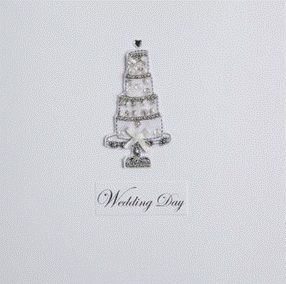
COU002
|
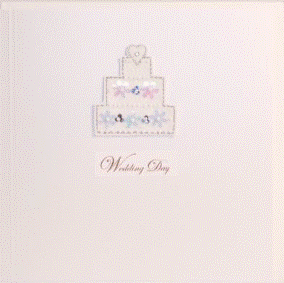
P439
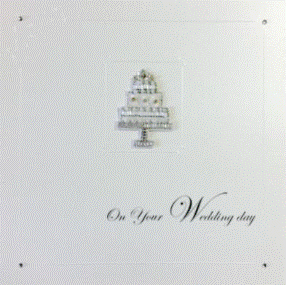
P535 (cake)
|
|
Allegedly infringing Saffron cards
from the Adorn and Couture ranges
|
Cards designed by Mrs Fields
alleged to have been infringed
|
|
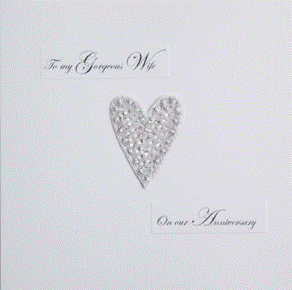
COU007
|

P479

P493
|
|
Allegedly infringing Saffron cards
from the Adorn and Couture ranges
|
Cards designed by Mrs Fields
alleged to have been infringed
|
|
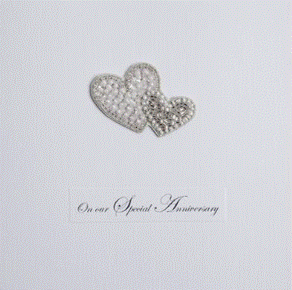
COU009
|
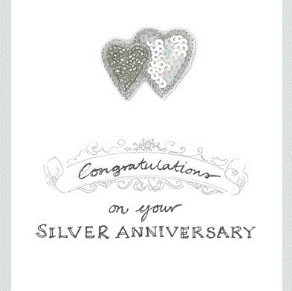
STR021
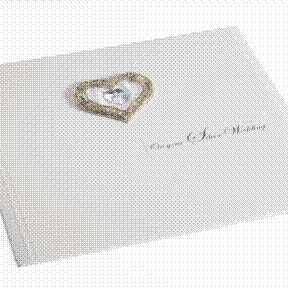
P515
|
|
Allegedly infringing Saffron cards
from the Adorn and Couture ranges
|
Cards designed by Mrs Fields
alleged to have been infringed
|
|

COU004
|

P537
|
|
Allegedly infringing Saffron cards
from the Adorn and Couture ranges
|
Cards designed by Mrs Fields
alleged to have been infringed
|
|
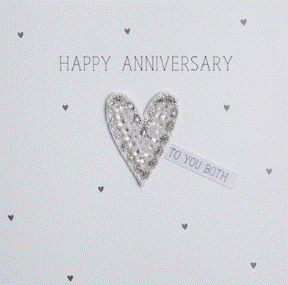
ADN002
|

P479
|
|
Allegedly infringing Saffron cards
from the Adorn and Couture ranges
|
Cards designed by Mrs Fields
alleged to have been infringed
|
|
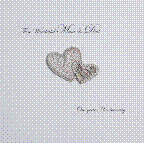
COU010
|
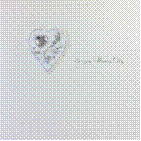
P535 (heart)
|
|

P534
|
|
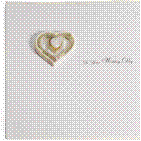
P492
|
|

STR002
|
|
Allegedly infringing Saffron cards
from the Adorn and Couture ranges
|
Cards designed by Mrs Fields
alleged to have been infringed
|
|
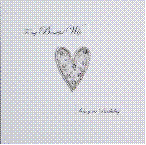
COU011
|

P535 (heart)
|
|

P534
|
|
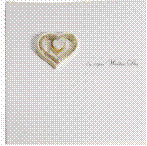
P492
|
|

STR002
|
|
Allegedly infringing Saffron cards
from the Adorn and Couture ranges
|
Cards designed by Mrs Fields
alleged to have been infringed
|
|
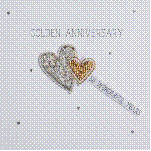
ADN007
|

P535 (heart)
|
|

P534
|
|

P492
|
|

STR002
|
|
Allegedly infringing Saffron cards
from the Adorn and Couture ranges
|
Cards designed by Mrs Fields
alleged to have been infringed
|
|

ADN004
|
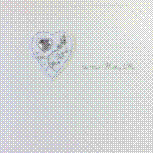
P535 (heart)
|
|

P534
|
|
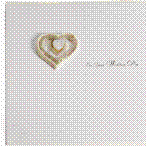
P492
|
|
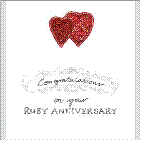
STR002
|
|
Allegedly infringing Saffron cards
from the Adorn and Couture ranges
|
Cards designed by Mrs Fields
alleged to have been infringed
|
|

ADN002
|

VPRL001 (one)
|
|
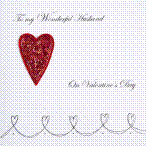
VPRL001 (husband)
|
|
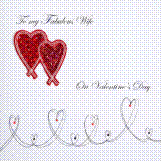
VPRL (wife)
|
|

STR002
|
Allegedly infringing Saffron cards
from the Adorn and Couture ranges
|
Cards designed by Mrs Fields
alleged to have been infringed
|
|

ADN001
|

VPRL001 (one)
|
|

VPRL001 (husband)
|
|
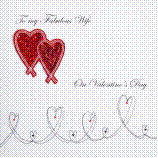
VPRL (wife)
|
|
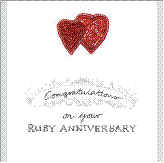
STR002
|
|
Allegedly infringing Saffron cards
from the Adorn and Couture ranges
|
Cards designed by Mrs Fields
alleged to have been infringed
|
|

ADN003
|

VPRL001 (one)
|
|
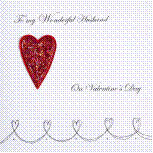
VPRL001 (husband)
|
|
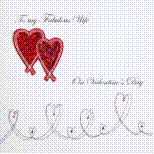
VPRL (wife)
|
|

STR002
|
|
Allegedly infringing Saffron cards
from the Adorn and Couture ranges
|
Cards designed by Mrs Fields
alleged to have been infringed
|
|

ADN004
|

VPRL001 (one)
|
|
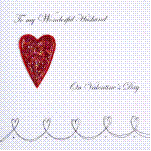
VPRL001 (husband)
|
|

VPRL (wife)
|
|

STR002
|

















































